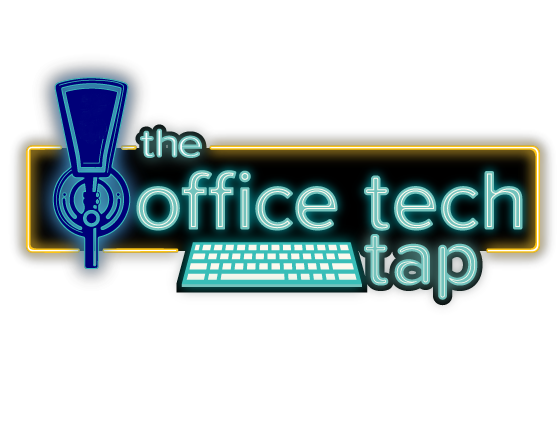Deep Dive – The Copier Conundrum: Microsoft’s Driver Decision and the Shifting Landscape of Office Tech

When Microsoft Hits ‘Delete,’ Copier Dealers Hit a Paper Jam Calls into Warm Handshakes: The High Art of Selling IT Managed Services
In a recent announcement that has sent ripples through the office technology industry, Microsoft declared its intention to cease support for third-party printer drivers on its Windows operating system by 2027. The tech behemoth plans to replace these drivers with a new default printing mode based on the Mopria standard. While Microsoft argues that this move will bolster the overall security of the Windows ecosystem, it raises significant concerns for copier and printer dealers who have built their businesses around the customization and specialized services that third-party drivers offer.
The Mopria Alliance, founded in 2013 by Canon, HP, Samsung, and Xerox, aims to establish universal standards for printing and scanning. Microsoft has been a part of this alliance, along with other industry giants like Epson, Lexmark, and Adobe. The integration of Mopria support into Windows 10 21H2 has made it easier for devices to connect via network or USB interfaces through the Microsoft IPP Class Driver, eliminating the need for print device manufacturers to provide their own installers, drivers, and utilities.
SideBar-
Mopria’s official website.
Mopria: Simplifying Mobile Printing and Scanning
What is Mopria? Mopria is an alliance dedicated to making mobile printing and scanning easy and universally accessible. With a focus on Android, Windows, Amazon Fire, Huawei, ZTE, and Chromebook platforms, Mopria ensures that users can print and scan documents seamlessly, regardless of the device or printer brand.
Key Offerings:
Print Solutions: Mopria provides solutions for a range of devices, including Android, Windows, Amazon Fire, Huawei, and ZTE. Their aim is to eliminate the need for multiple, brand-specific apps or drivers.
Scan Solutions: Mopria offers scanning solutions for Android, Windows, and Chromebook users. Their technology ensures that scanning is as straightforward as possible, even from mobile devices.
Certified Products: Mopria certifies products that meet their standards, ensuring that users have a consistent and hassle-free experience.
Microsoft’s argument for this seismic shift is rooted in security concerns. Third-party printer drivers have been known to expose users to significant security risks due to vulnerabilities that often go unnoticed for years. However, this argument fails to consider the many businesses that rely on specialized printer drivers for essential functions. The transition to a Mopria-based system could be fraught with challenges, including compatibility issues and a lack of specialized features that many businesses have come to rely on.
The timeline for phasing out third-party drivers is gradual but definitive. By 2025, Microsoft will stop publishing new printer drivers to Windows Update. In 2026, the company will prioritize its internal Windows Internet Printing Protocol (IPP) Class drivers. Finally, by 2027, updates to third-party printer drivers will no longer be distributed via Windows Update, unless they are security fixes[^4^].
While Microsoft assures that existing third-party printer drivers can still be installed from Windows Update or directly from the manufacturer, the long-term viability of these drivers is in question. Copier and printer dealers will need to rethink their business models and possibly pivot to new avenues for revenue generation.
This move by Microsoft is not just a technical adjustment; it’s a fundamental shift in how businesses will interact with their printing and scanning devices. For years, copier and printer dealers have thrived on the customization and specialized services that come with third-party printer drivers. These drivers often offer features and functionalities tailored to specific business needs, something that a one-size-fits-all solution like Mopria may not provide.
Moreover, the decision to end support for third-party drivers could have a cascading effect on other software and hardware that integrate with these drivers. Companies that have built solutions around the capabilities of specialized drivers may find themselves back at the drawing board, rethinking their entire IT infrastructure.
The impact of this decision extends beyond just the dealers; it affects the entire supply chain. Manufacturers who have invested in developing specialized drivers may see a decline in demand, leading to potential layoffs and a shift in R&D focus. On the other hand, businesses that have long-term contracts with dealers for printers and copiers with specialized drivers may face legal and operational challenges in transitioning to new systems.
The Mopria standard itself is not without its limitations. While it aims to provide a universal solution, it may lack the specialized features that certain industries require. For example, legal firms, healthcare providers, and design agencies often require advanced printing features that a generic driver might not offer.
In conclusion, Microsoft’s decision to phase out third-party printer drivers in favor of the Mopria standard is a double-edged sword. While it promises a more secure and streamlined user experience, it poses significant challenges for copier and printer dealers, as well as other stakeholders in the office technology industry. As the industry grapples with this monumental shift, adaptability and innovation will be key in navigating the uncertain waters ahead.
Sources:
Disclaimer: The views expressed in this article are those of the author and do not necessarily reflect the official policy or position of any other agency, organization, employer, or company.
– Greg Walters, Head Writer



